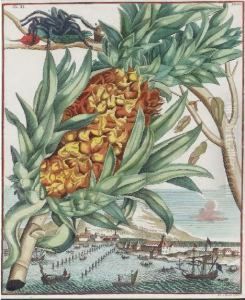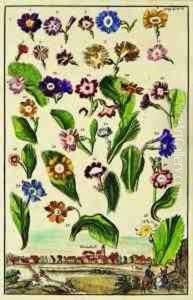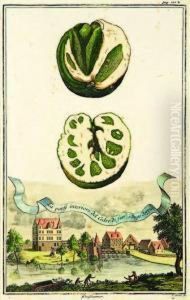Johann Christoph Volckamer Paintings
Johann Christoph Volckamer was a German businessman, amateur botanist, and patron of the arts, born in 1644 in Nuremberg, a city with a rich cultural and scientific heritage. Despite not being a professional artist, his contribution to the arts and sciences during the Baroque period is remembered primarily through his published work, which provides a glimpse into the botanical and cultural interests of an educated and wealthy individual of his time.
Volckamer's most notable work is the 'Hesperides,' a two-part publication that showcases a variety of citrus fruits along with descriptions and illustrations. The first part, 'Hesperides, sive, De malorum aureorum cultura et usu libri quatuor' (Hesperides, or, Four Books on the Cultivation and Use of the Golden Apples), was published in 1708. The second part came out in 1714. These volumes are significant not only for their botanical content but also for the detailed engravings that feature landscapes and views of gardens, particularly those of Italy, where he traveled extensively. These illustrations provide important historical records of Baroque garden design and urban landscapes of the period.
While Volckamer's direct involvement in the arts may not have been as an artist himself, his patronage and interest in botany and horticulture contributed to the documentation and dissemination of knowledge in these areas. His work, especially the 'Hesperides,' is valued by historians and art historians alike for its detail and the light it sheds on the interests and leisure pursuits of the European elite during his lifetime.
Johann Christoph Volckamer died in 1720 in Nuremberg. Although he might not be as widely recognized as other figures from the world of art and science, his legacy persists in the form of his contributions to early modern botanical literature and the insights his work provides into the cultural life of his era.


